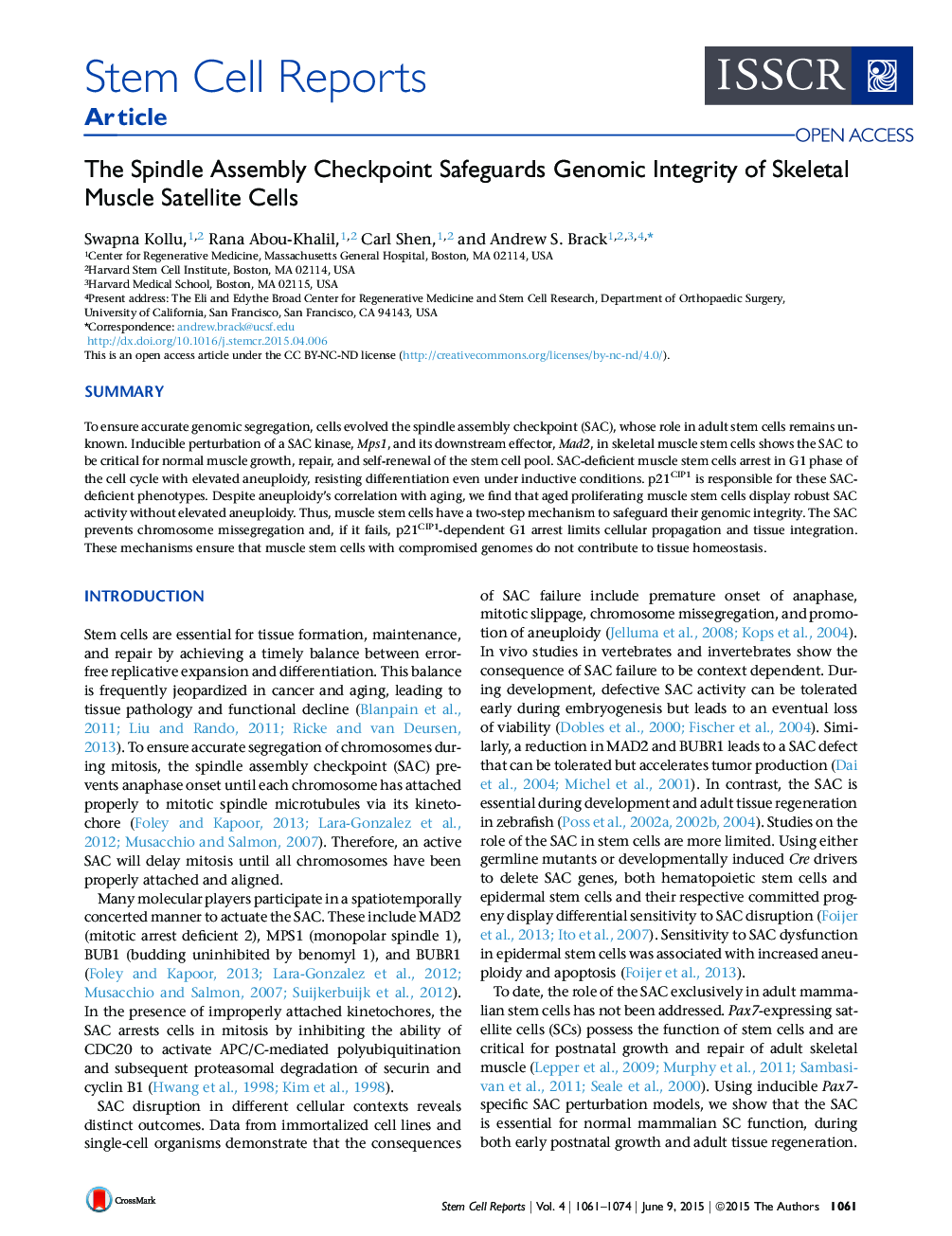| Article ID | Journal | Published Year | Pages | File Type |
|---|---|---|---|---|
| 2093546 | Stem Cell Reports | 2015 | 14 Pages |
•Activation turns on spindle assembly checkpoint (SAC) genes in muscle stem cells•SAC failure leads to G1 arrest, raises aneuploidy, and blocks differentiation•G1 arrest is mediated through the p53/p21 pathway•Activated muscle stem cells from aged mice possess a robust SAC
SummaryTo ensure accurate genomic segregation, cells evolved the spindle assembly checkpoint (SAC), whose role in adult stem cells remains unknown. Inducible perturbation of a SAC kinase, Mps1, and its downstream effector, Mad2, in skeletal muscle stem cells shows the SAC to be critical for normal muscle growth, repair, and self-renewal of the stem cell pool. SAC-deficient muscle stem cells arrest in G1 phase of the cell cycle with elevated aneuploidy, resisting differentiation even under inductive conditions. p21CIP1 is responsible for these SAC-deficient phenotypes. Despite aneuploidy’s correlation with aging, we find that aged proliferating muscle stem cells display robust SAC activity without elevated aneuploidy. Thus, muscle stem cells have a two-step mechanism to safeguard their genomic integrity. The SAC prevents chromosome missegregation and, if it fails, p21CIP1-dependent G1 arrest limits cellular propagation and tissue integration. These mechanisms ensure that muscle stem cells with compromised genomes do not contribute to tissue homeostasis.
Graphical AbstractFigure optionsDownload full-size imageDownload as PowerPoint slide
